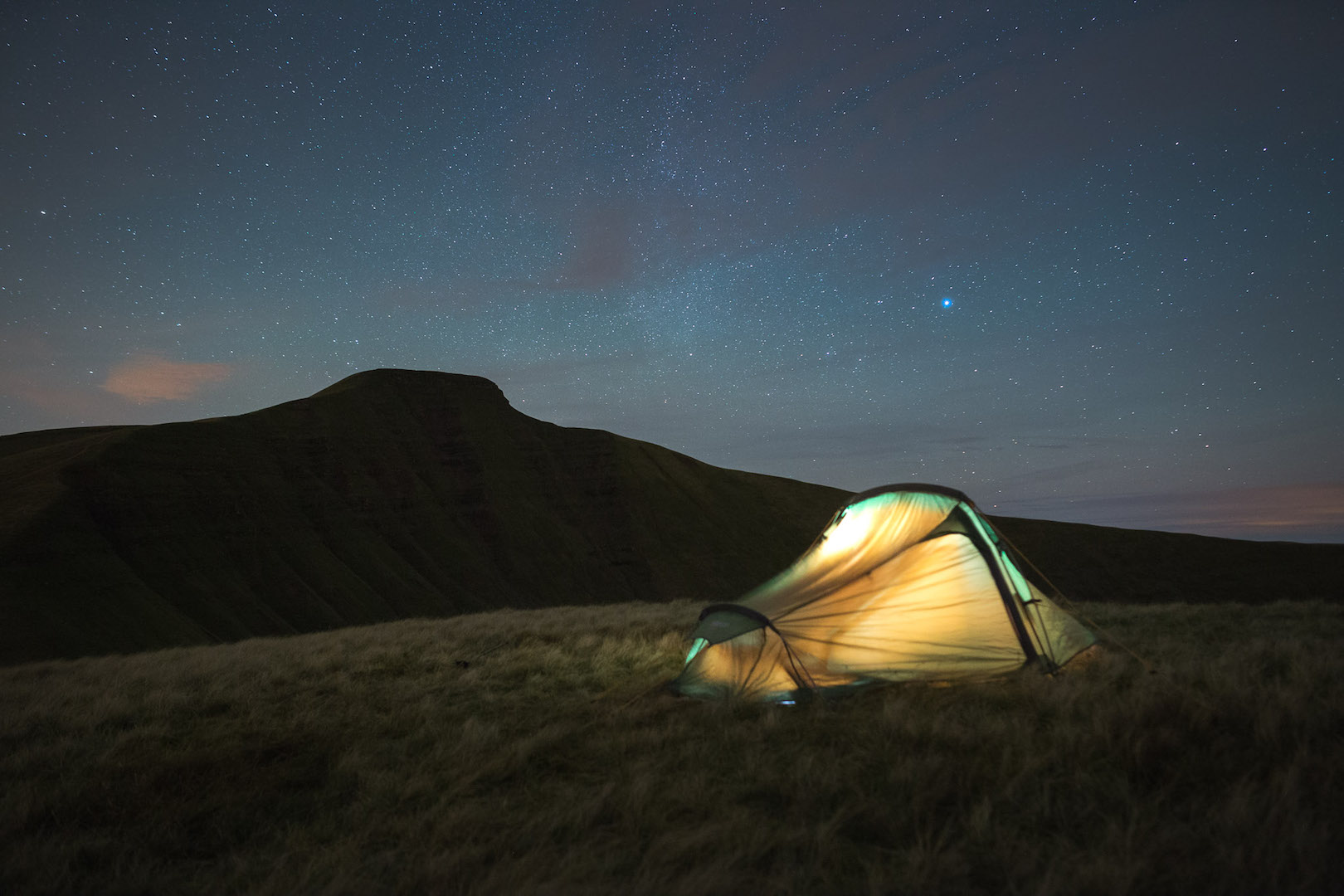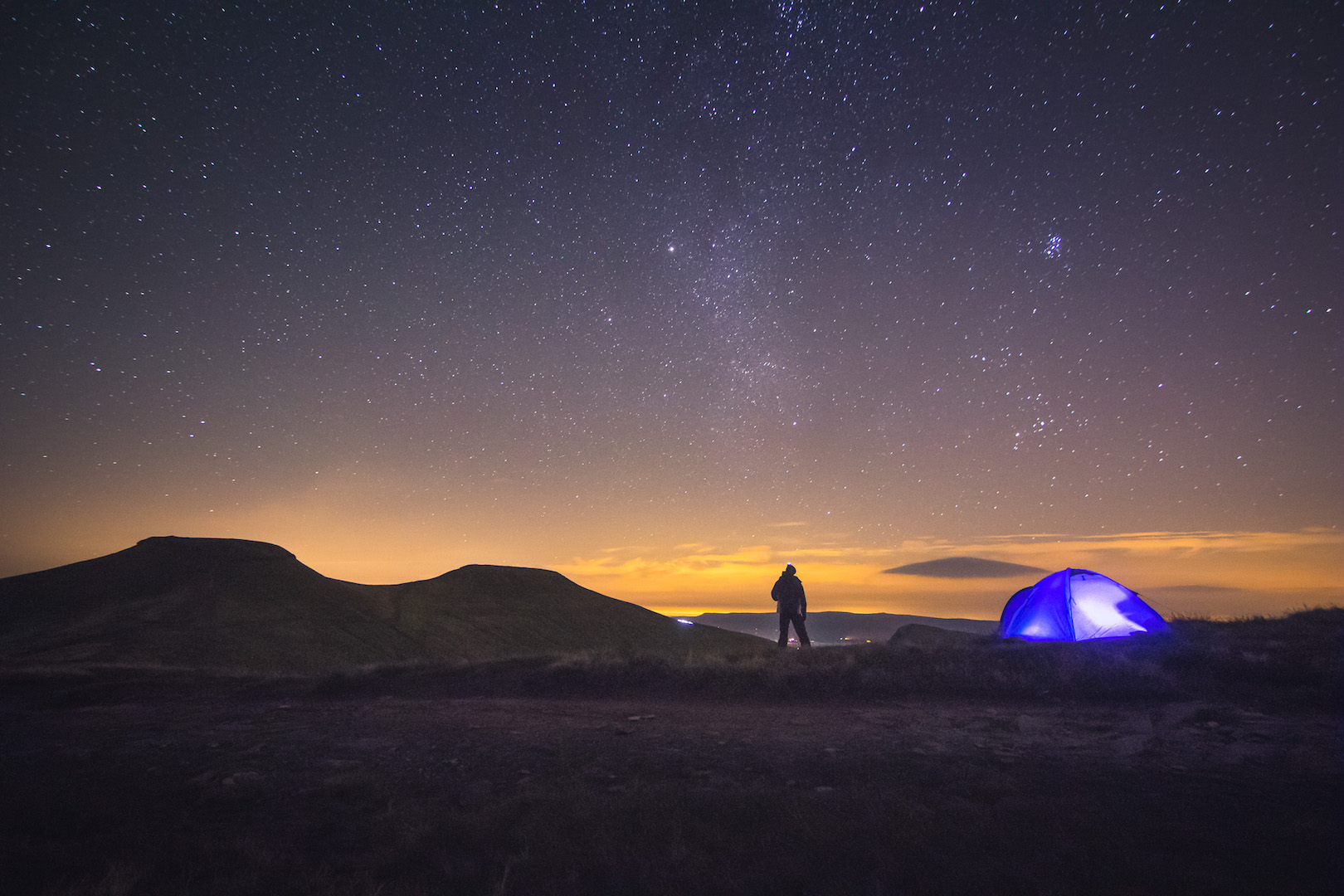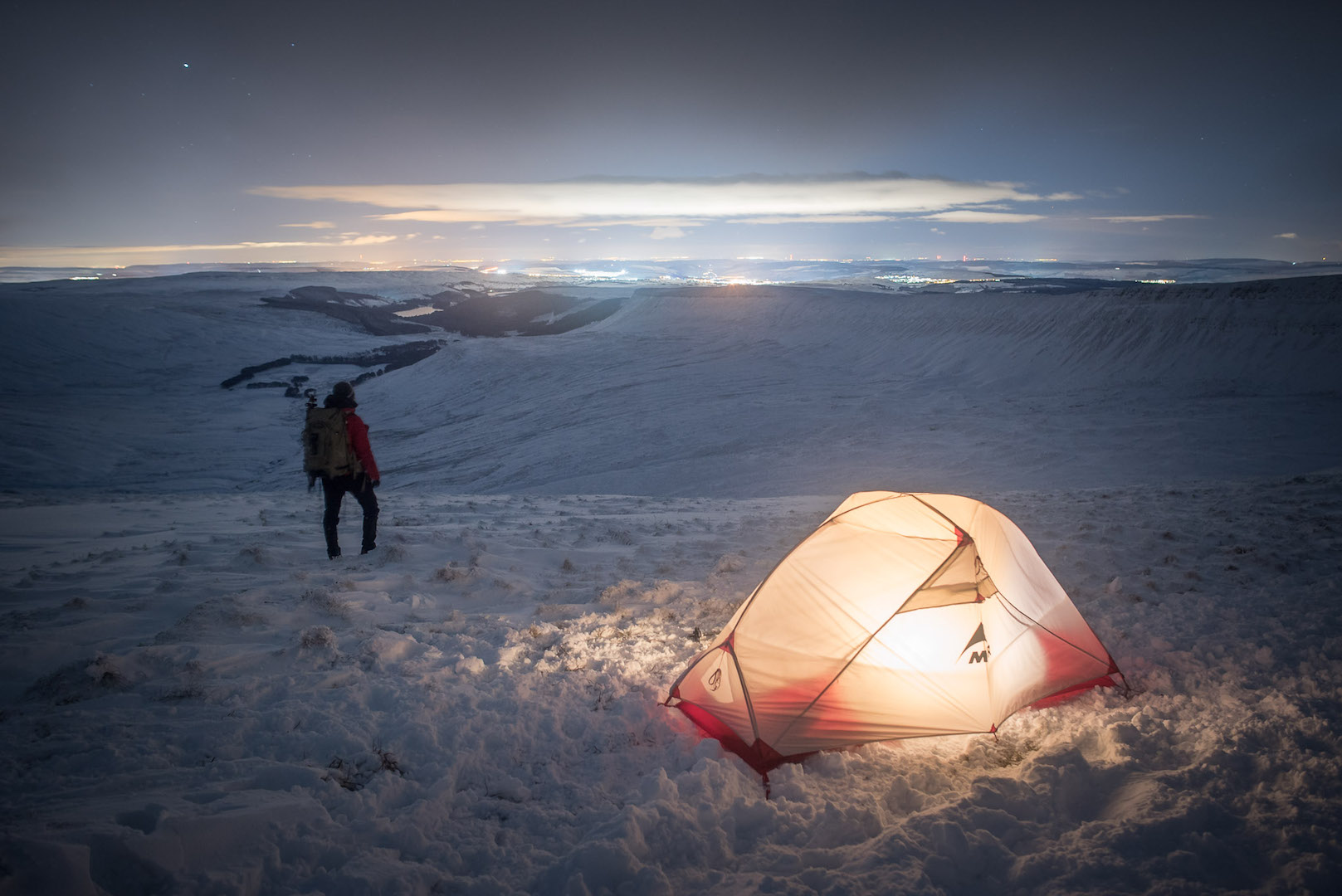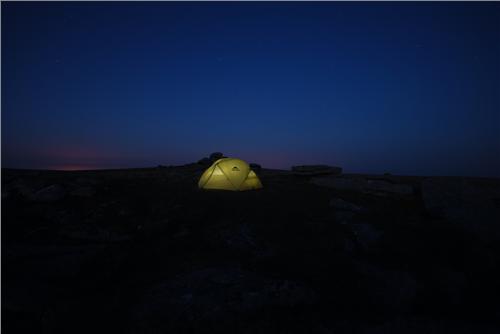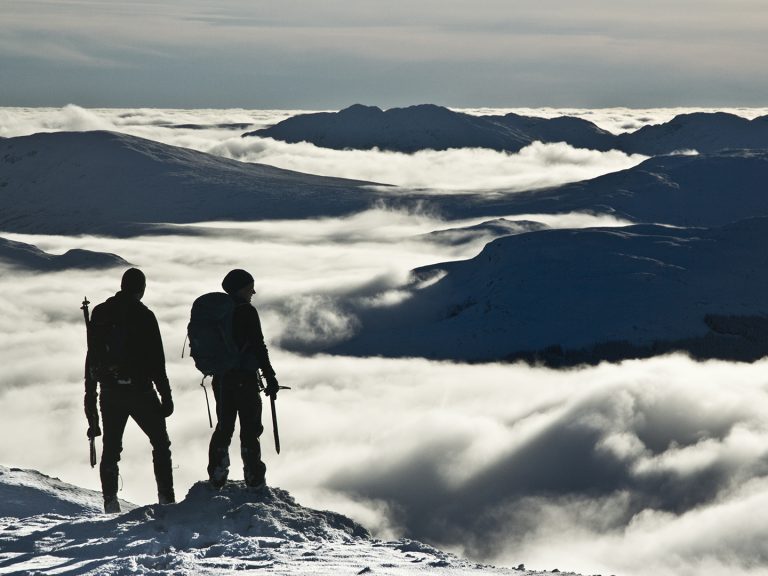Photographing a Tent at Night: What Do You Need?
Camera
Cameras have come a long way in recent years with entry-level models now perfectly capable of stunning night time photography. Ideally you’d want a DSLR or a Compact System Camera. If you can change the lens you can always upgrade in the future too. Smartphones are trickier, but try photographing your tent during twilight and your tent will still be visibly lit-up.
Tripod
This will allow you to do long exposures, creating a brighter image in the dark. If you’re not willing to carry a photography tripod then something like a Gorillapod will save you the weight (and a bit of money). That said you can just as well use a nice flat rock or surface, I even remember a friend telling me they used their shoe as a tripod for a shot of the Milky Way!
Light
Using your headtorch is perfectly fine or even the flash on your smartphone. As a bonus tip you can put a tissue or a t-shirt over the light source to dim and soften the light so that the tent is not too bright.
A tent (stating the obvious!)
For those interested in what kind of lens is best, a wide-angle that allows for an aperture of f/2.8 or wider will allow you to capture stunning images with the stars and Milky Way (best shot between April-September in the UK).

Photographing a Tent at Night: Camera Settings
When out in the dark your camera loses all its intelligence and the auto-modes don’t tend to work as you’d want them to. Some cameras may come with a low-light or star mode so it’s worth trying that but for best results you should go full manual – and don’t worry, it’s not as daunting as it sounds.
There are three settings that control how bright your image is:
Shutter Speed
The longer you leave the shutter open the more light is recorded, so the longer the shutter speed the brighter the image. For photographing a tent at night, try something in the range of 5-30 seconds.
ISO
This is how sensitive your camera is to light, so a higher ISO means a brighter image. Try the different settings between ISO 800 and 3200. The problem with increasing the ISO is that you get noise in your image, a grainy texture that simply looks ugly. If you own a new DSLR you may be able to go as high as ISO 6400 but for compact cameras stick to ISO 800-1600.

